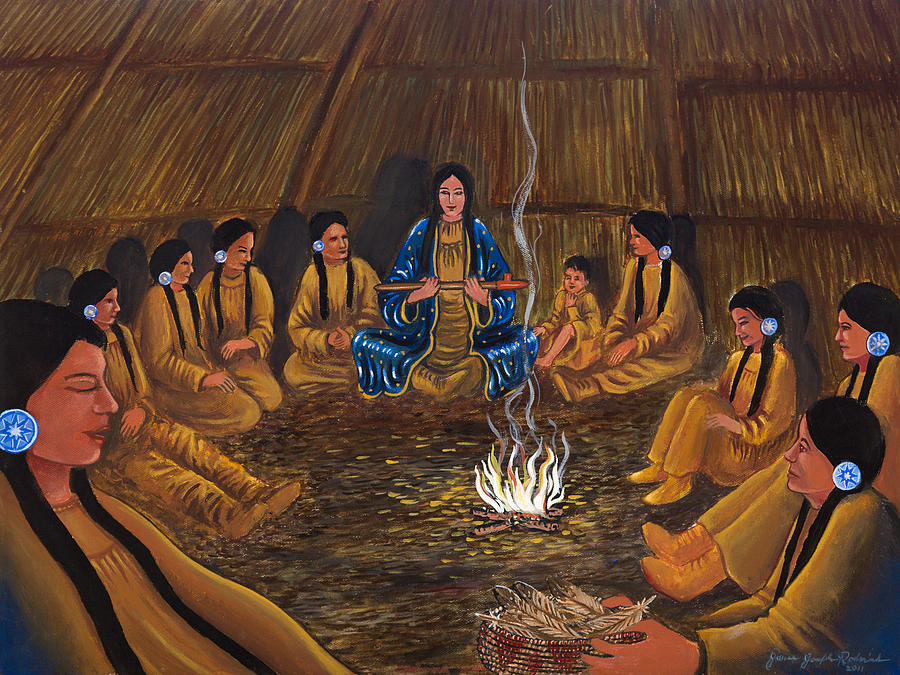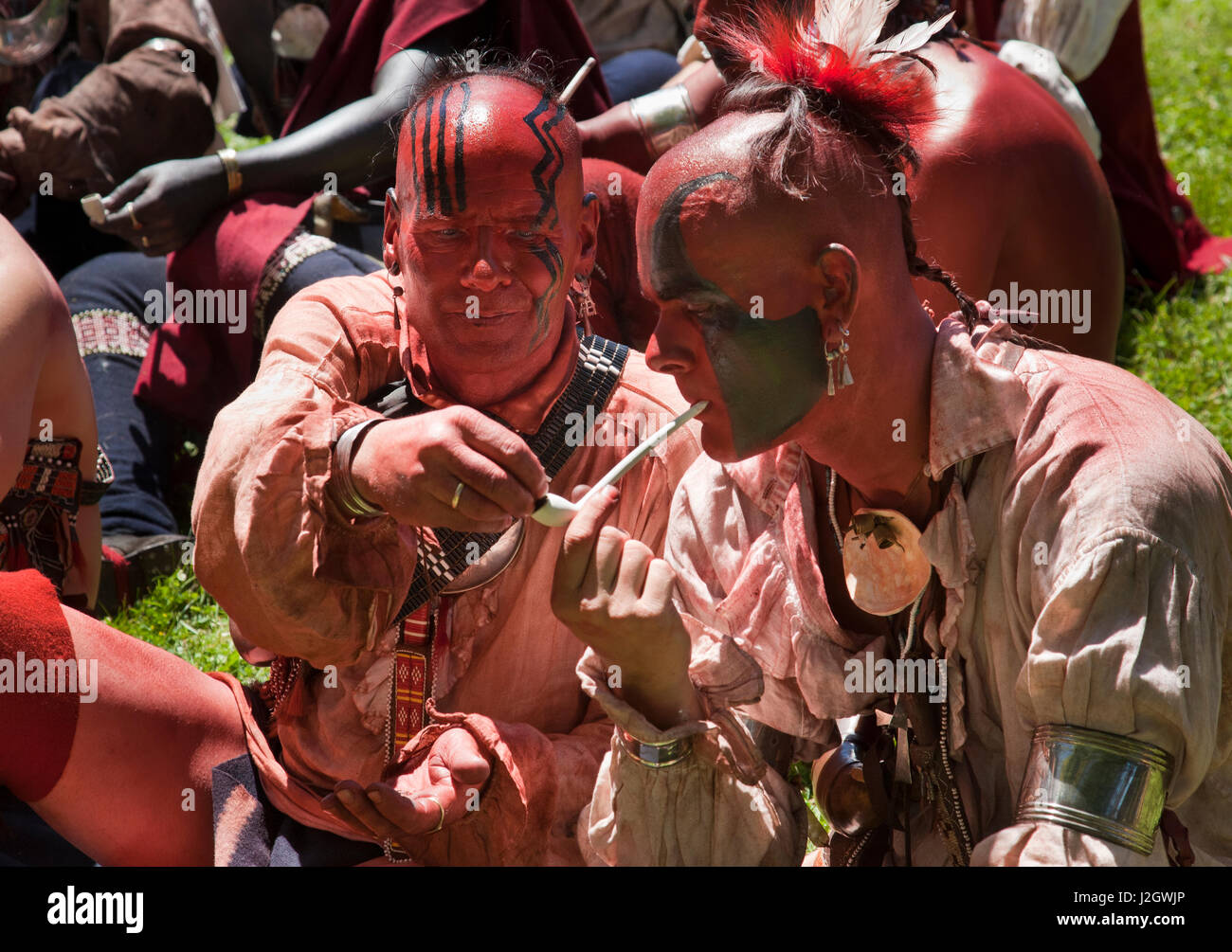
The Sacred Breath: Unveiling the Profound Significance of Native American Pipe Ceremonies
[Image: A beautifully crafted Native American pipe, perhaps with a feather or beadwork, resting on a ceremonial cloth. Or a respectful, blurred image of hands holding a pipe during a ceremony.]
In the vast and diverse spiritual landscape of Indigenous North America, few practices evoke as much reverence, mystery, and misunderstanding as the Native American pipe ceremony. Often reduced to a simplistic act of “smoking” in popular culture, the reality is a profoundly spiritual, communal, and deeply meaningful ritual that forms the bedrock of many tribal traditions. It is not about recreation, nor is it about drug use; it is a sacred prayer, a covenant with the Creator, and a tangible connection to ancestral wisdom that continues to resonate powerfully today.
To truly understand the pipe ceremony, one must first dismantle the prevalent misconceptions. This is not a casual gathering around a campfire with commercial tobacco. Instead, it is a solemn, deliberate, and often emotionally charged event, guided by an elder or spiritual leader, where every gesture, every breath, and every element holds symbolic weight. The tobacco used, typically Nicotiana rustica or other traditional blends, is not the addictive variety found in cigarettes, but a potent, sacred herb considered a direct offering to the spirit world, a vehicle for prayers carried on the smoke.
"The pipe is a direct line to the Creator," explains Joseph Chasing Horse, a Lakota elder, in various teachings. "When we light the pipe, our prayers go directly to Wakan Tanka (the Great Mystery). It is a way to speak our truth, to ask for guidance, to give thanks, and to seek healing, not just for ourselves, but for all of creation."
The Sacred Instrument: Calumet and Chanunpa
The pipe itself is a powerful artifact, often referred to as a "calumet" (a French term derived from the Latin for "reed") or, more specifically by the Lakota, as a "chanunpa." It is typically comprised of two main parts: the bowl and the stem. The bowl, often carved from a red stone called pipestone (catlinite), particularly sacred to many Plains tribes, symbolizes the Earth, the feminine principle, and the human heart. The stem, usually made of wood, represents the Tree of Life, the masculine principle, and the connection between the spiritual and physical realms.
The joining of the bowl and stem before a ceremony is a symbolic act of unity, bringing together male and female, sky and earth, spirit and matter. The pipe is often adorned with feathers, beads, fur, or ribbons, each embellishment carrying its own specific meaning or representing a prayer. These pipes are not merely tools; they are living, sacred entities, imbued with the prayers and intentions of generations. They are often passed down through families or entrusted to spiritual leaders, becoming repositories of collective memory and spiritual power.
The Sacred Tobacco: A Gift, Not a Habit
The tobacco used in pipe ceremonies is fundamentally different from commercial tobacco. For Indigenous peoples, tobacco is a gift from the Creator, a powerful medicine plant with a long history of use in ceremonies, offerings, and healing. It is not consumed for recreational purposes but offered as a sacred conduit for prayer. The smoke is believed to carry thoughts, intentions, and prayers from the physical world into the spiritual realm, directly to the Creator and to the ancestors.
"We don’t smoke it to get a buzz," says a respected Anishinaabe knowledge keeper. "We smoke it to make our prayers strong. It’s spirit food. When you offer tobacco, you’re opening a channel, showing respect, and asking for help or giving thanks." This distinction is crucial for outsiders to grasp, as it highlights the profound spiritual reverence, rather than a physical addiction, associated with the plant within this context.

The Ceremony Unfolds: A Journey of Intention
While specific practices vary among the hundreds of distinct Native American nations, a general outline of a pipe ceremony can be described, emphasizing the common threads of reverence, intention, and connection.
-
Preparation and Cleansing: The ceremony often begins with a smudging, where sacred herbs like sage, sweetgrass, or cedar are burned, and the smoke is wafted over participants and the pipe itself to cleanse, purify, and prepare for prayer. Participants are encouraged to enter with a good heart and clear mind.
-
Filling the Pipe: The elder or pipe carrier carefully fills the bowl with the sacred tobacco, often using a pinch for each of the Four Directions (East, South, West, North), Mother Earth, Father Sky, and the Great Mystery. Each pinch represents a specific prayer or intention – for health, peace, wisdom, understanding, or for the well-being of all living things. This act is deliberate, meditative, and an extension of the prayer itself.
-
Lighting and Offering: Once filled, the pipe is lit, often with a wooden match or a specific ceremonial lighter. The first few puffs are not inhaled but offered to the Four Directions, to the Earth and Sky, and to the Creator. This is a profound act of acknowledging interconnectedness and honoring all aspects of existence.
-
Passing the Pipe: The pipe is then passed among participants, typically in a clockwise direction, symbolizing the sun’s path and the flow of life. Each person holds the pipe with reverence, often taking a moment for personal prayer or reflection before taking a puff. The smoke is gently inhaled and exhaled, carrying individual prayers and collective intentions. It is a moment of deep introspection and shared spiritual experience.
-
Prayers and Teachings: Throughout the ceremony, the elder or pipe carrier will offer prayers, songs, and teachings. Participants may also be invited to share their own prayers or speak their truth, fostering a sense of community, vulnerability, and mutual support. The shared breath of the pipe creates a powerful bond, uniting those present in a common purpose.
-
Completion and Gratitude: Once all have participated and the tobacco has burned down, the pipe is carefully taken apart, often with a prayer of gratitude. The ashes, representing the prayers that have ascended, may be returned to the Earth as an offering. The ceremony concludes with a sense of peace, clarity, and renewed connection.
Purpose and Meaning: Beyond the Smoke
The pipe ceremony serves a multitude of purposes beyond individual prayer. It is a cornerstone for:
- Healing: Both physical and spiritual, helping individuals process grief, trauma, and illness.
- Decision-Making: Community leaders often use the pipe to seek guidance and ensure decisions are made with the collective good in mind.
- Truth-Telling: In some contexts, the pipe is used in councils to ensure honesty and sincerity, as it is believed that one cannot lie while holding the sacred pipe.
- Peacemaking: Historically, the pipe was central to treaty negotiations and resolving disputes, symbolizing a shared commitment to peace and understanding.
- Connecting with Ancestors: It is a way to honor and communicate with those who have walked before, drawing on their wisdom and strength.
- Renewing Commitments: Participants renew their vows to their spiritual path, their community, and their responsibilities to the Earth.
"When you hold that pipe, you’re not just holding wood and stone," says a Navajo elder. "You’re holding the universe. You’re holding your ancestors. You’re holding your future. It makes you humble, and it makes you strong."
A History of Resilience and Revival
The practice of pipe ceremonies, like many Indigenous spiritual traditions, faced severe suppression and persecution during the colonial era. The U.S. government, through policies aimed at forced assimilation, banned Native American religious practices, including the pipe ceremony, for many decades. The American Indian Religious Freedom Act of 1978 was a landmark moment, finally guaranteeing Indigenous peoples the right to practice their traditional religions.
Despite this dark chapter, the pipe ceremony persisted, often in secret, carried forward by resilient elders and communities. Today, it is experiencing a vibrant resurgence, not only within tribal communities but also as a source of inspiration for non-Indigenous people seeking deeper spiritual connections, provided they approach it with genuine respect and invitation.
Modern Relevance and Respectful Engagement
In contemporary society, pipe ceremonies continue to be held in homes, community centers, at sacred sites, and even in interfaith gatherings. They stand as a powerful testament to the enduring strength, adaptability, and profound spiritual depth of Indigenous cultures. As interest grows, it is paramount for non-Indigenous individuals to approach these ceremonies with the utmost respect, humility, and a willingness to learn. Participation should always be by invitation or under the direct guidance of an authorized elder. Cultural appropriation, which involves taking elements of a culture without understanding or respecting their deeper meaning, remains a significant concern. True understanding comes from respectful engagement, listening, and honoring the protocols established by Indigenous communities.
The Native American pipe ceremony is far more than a ritual; it is a way of life, a philosophy, and a continuous prayer. It embodies a holistic worldview that recognizes the interconnectedness of all things – human beings, animals, plants, the earth, the sky, and the spirit world. It teaches patience, humility, gratitude, and responsibility. In an increasingly disconnected world, the sacred breath of the pipe ceremony offers a profound lesson in unity, presence, and the timeless power of prayer carried on the smoke, reminding us of our shared humanity and our collective responsibility to care for one another and for our precious Mother Earth.


